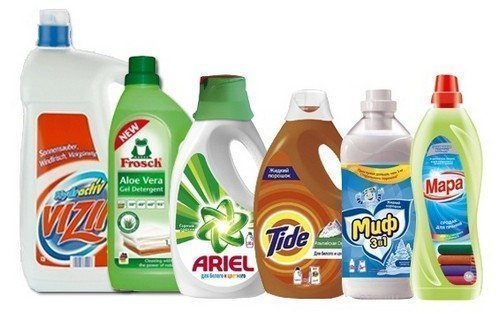Polyester is 100% synthetic material. For its production, oil and gas processing products are used. To make the item more durable, natural and synthetic fibers are intertwined, so you should not be afraid of the words Polyester on the label.
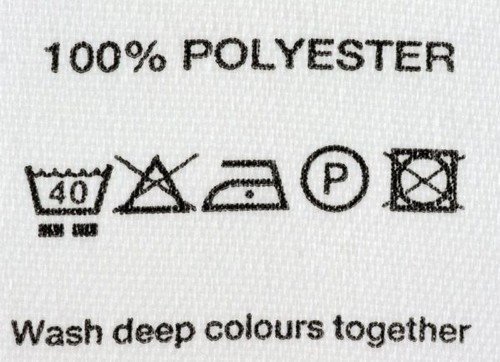
Features of the material
If the technology for manufacturing artificial fibers is followed, high-quality fabric is obtained. It is odorless and does not shed. Casual and outerwear, underwear, bags and textile products are made from it.
The material has the following properties:
- Ease.
- Low price.
- Synthetic fibers do not harbor moths and other insects.
- Does not absorb odors.
- It tolerates exposure to high and low temperatures well and protects against ultraviolet rays.
- High strength, resistance to friction and stretching, wear resistance.
- Ease of processing when making things.
- Easy to care for, synthetic items wash well, dry quickly, and are easy to iron.
- Fabrics retain their original color for a long time and do not fade.
- Water-repellent properties.
- Does not stretch, retains its shape after numerous washes.
All of the above properties are preserved only with proper use. When overheated, clothes can become deformed, and if the ironing regime is not followed, wrinkles can form that will be impossible to get rid of in the future.
Negative aspects of the material:
- Electrification.Static electricity accumulates in polyester fiber; the lightweight fabric sticks to the skin and attracts dust and other small particles.
- Cheap material, which was not manufactured according to technology, can cause allergies.
- The fabric does not dye well.
- Due to the high density, the clothes are uncomfortable to wear in hot weather.
- When exposed to bleaches, the fiber is destroyed.
Is polyester washable?
Since there is a huge amount of clothing made of 100% polyester on the market, the question arises of how to properly care for such things. Not only can they be washed, but they must be washed. If all requirements are met, such things will last quite a long time.
There are universal requirements that apply to all things. The care instructions for each item are indicated on the label attached to it. The washing mode (manual or machine), the maximum permissible water and iron temperature are indicated.
The powder must match the color of the fabric. An all-purpose detergent is suitable for white clothes, and a detergent for colored clothes is suitable for dark clothes. There are powders that have an antistatic effect. After using the rinse aid, things become soft and elastic; they do not need to be ironed.
In what cases is it not possible?
Absolutely all polyester items can be washed. If you follow the care instructions, this will not harm the fiber.
Temperature
If the label is missing any instructions or is cut off and lost, there are general recommendations that apply to all polyester products. You can wash items made from synthetic thread at a temperature of 40°C.To ensure that the front side of the fabric undergoes changes to a lesser extent, things are turned inside out.
If the item only needs to be refreshed and there are no traces of dirt on it, then water heated to about 20-25°C will do. In colder water, it becomes difficult to use the powder, since it will not dissolve and will not show its cleaning properties.
On some less delicate items, the label indicates a temperature of 60°C - this is the maximum permissible limit. When exposed to harsh detergents and higher temperatures, the fibers split faster and the strength of the product is lost. It is strictly forbidden to boil the material.
How to wash by hand?
Since polyester items are easy to wash, you can easily handle them with your hands.
Basic Rules:
- The water temperature should not exceed the limit specified by the manufacturer. Since it is difficult to control this indicator with your hands, you can use a bathing thermometer for convenience.
- Use a soft cloth to wipe away stains. It is forbidden to rub the fabric, subject it to sudden jerks, or use brushes, all this can damage the fibers.
- Things don't wring out. Heavy items can be placed on a flat surface, and light items can be hung on hangers. The water will drain quickly and remain smooth after drying.
If you need to get rid of the smell of sweat or other foreign odors from an item, it is not necessary to use powder. Just soak it and rinse it in conditioner.
How to wash in a washing machine?
Before washing the product in the machine, you need to make sure that there are no prohibiting symbols on the label. You can only load items of one color into the drum.
Basic Rules:
- Delicate items are packed in washing bags.
- Stains are removed manually in advance.
- If there is light contamination, pre-soaking is used.
- A gentle powder is selected that matches the color of the product.
- The optimal mode is delicate or manual.
- The maximum number of revolutions for spinning is 800.
- Rinse with conditioner.
- To make things dry faster, you can put them on a terry towel.
Modes
The washing mode is indicated on the product, usually delicate or manual. If the washing machine has a separate mode for sports items, then it can also be used. If there is no heavy soiling, you can use a quick wash.
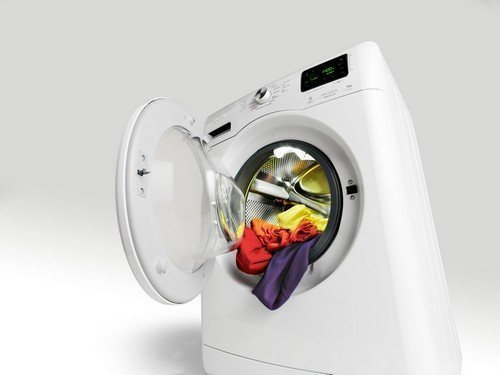
How to remove stains?
Difficult stains are treated in advance. The pre-detergent is tested on an inconspicuous area of the fabric to test fiber strength and dye fastness. If the paint is not durable, then stain removers are not used; they are replaced with a soap solution.
Store-bought stain removers should not contain chlorine. The selected substance is applied to the stain and rubbed in with the back of a spoon. Its smooth surface will not allow the fabric to deform.
To remove stains from polyester, you can use folk remedies:
- wet the contaminated area, apply table salt to it, which will gradually absorb the dirt;
- Apply a 10% borax solution to colored clothing using a cotton pad, and use citric acid or natural lemon juice to neutralize it.
What is not recommended to do when washing?
The main rules for caring for polyester products prohibit:
- boil;
- unscrew;
- use bleaches and chlorine-containing powders.
General Tips
To summarize, we can highlight the general rules:
- maintaining a temperature regime of 40°C;
- using delicate or manual mode;
- spin no more than 800 rpm;
- using detergents according to the color of the fabric;
- lack of chlorine in the detergent;
- using covers for delicate items;
- no manual twisting;
- using air conditioning.
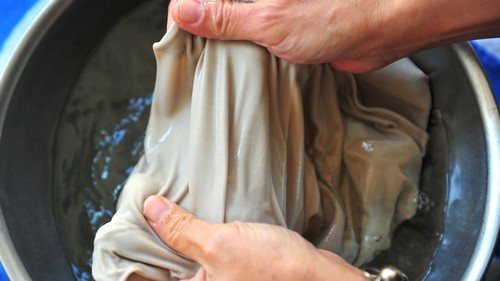
Subtleties of washing polyester items
Not all items behave the same after washing, especially for outerwear or delicate items. Next we will talk about the features of washing some things.
Coat
Polyester coats can be machine washed using the delicate or synthetic cycle. The optimal water temperature is 30°C. To thoroughly rinse the powder out of a thick cloth, use an additional rinse. The coat is dried on a hanger and then steamed using a damp cloth. If there are natural fibers in the fabric, it is not recommended to wash it frequently to avoid pilling.
Jacket
The rules for washing a jacket are similar to coats. Before loading into the drum, the pockets are checked, decorative elements are unfastened, and the jacket is turned inside out. If there is a filler, special products such as “Weasel” or “Vorsinka” are used. The volume of the product will allow you to preserve the air conditioner. To prevent the product from becoming wrinkled, a minimum number of spin speeds is used.
Down jacket
If the jacket has natural feather inside, it can also be machine washed. However, there are some features:
- Only liquid powder is used;
- the thing does not get out;
- an additional rinse with conditioner is used;
- the down jacket is dried on hangers;
- Every few hours the product needs to be shaken to fluff up;
- After drying, the down jacket should hang upside down for some time to maintain its shape.
Dress
Dresses and other lightweight clothing can be washed either by hand or in the washing machine, it is important to follow the instructions on the label. Temperature conditions up to 60°C are allowed. Items are sorted by color and the delicate mode is set. If there are stains, the product is pre-soaked to prevent wrinkles from appearing. The dress is not wrung out.
Thermal underwear
To prevent thermal underwear from losing its properties, it must also be washed following several rules. The maximum water temperature is 40°C. Linen is washed inside out; no stain removers, solvents, or chlorine-containing products are used; thermal underwear is not dry-cleaned. After washing, the product is wrung out, but not twisted. Drying is done away from sunlight and heat sources.
Blanket
Washing a blanket with synthetic filling can easily ruin its shape. You can wash the blanket in the machine if its capacity is more than 5 kg. Only liquid powder is used and the delicate mode is set. Additional rinsing will be required, the number of spin speeds used is minimal. After washing, the blanket is laid out on a smooth surface and periodically turned over to dry evenly. If the blanket is oversized, then it is washed in the bathroom by hand, pre-soaking for 15 minutes is required, then the fabric is cleaned with a soft sponge.
Curtains
Synthetic curtains can be easily washed in the washing machine. To eliminate dust, a temperature of 30⁰C is sufficient.When washing by machine, you can discard the powder; when washing by hand, it can be used in minimal quantities. To prevent wrinkles from appearing on the curtains, do not wring them out. When the water has drained, they can be hung in their original place. Most curtains do not require ironing; others are ironed through the fabric at the lowest setting.
Backpack
To wash a polyester backpack, all decorative elements are removed from it and immersed in a machine drum. Use delicate or manual mode. To avoid the backpack losing its shape, it is not wrung out. If you only need to wash the handles or straps, you can use a soap solution and a soft brush or sponge.
How to dry?
Polyester dries quickly, especially if you hang the product in a draft. Synthetic items should not be hung in the sun or near heating appliances. During push-ups, pressing movements are used; twisting the product is not recommended. If you squeeze the fabric, it may leave creases that are difficult to iron out. It is best to let the water drain naturally by hanging the item on hangers or pat it dry with a terry towel.
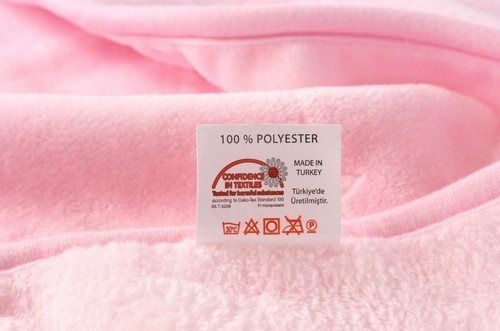
How to iron?
Many polyester items do not need ironing because they straighten themselves as they dry. If there is a need for ironing, the minimum temperature setting is set, which is called “silk” or is indicated by one dot; in addition, damp gauze is used.
Can I take it to the dry cleaner?
A dry cleaning statement must be indicated on the label. This depends on the production technology of synthetic fiber and the dyes used. Most items can still be dry cleaned.
How to care for polyester clothing?
In order for clothes to last for many years, it is necessary to follow the washing, spinning and drying regime recommended by the manufacturer. It is important to use high-quality detergents for delicate fabrics and not expose the product to high temperatures. To ensure that the material retains its shape and color, rinses are used, which also have an antistatic effect. Drying is carried out in the shade, and when using a dryer, gentle temperatures are turned on.







